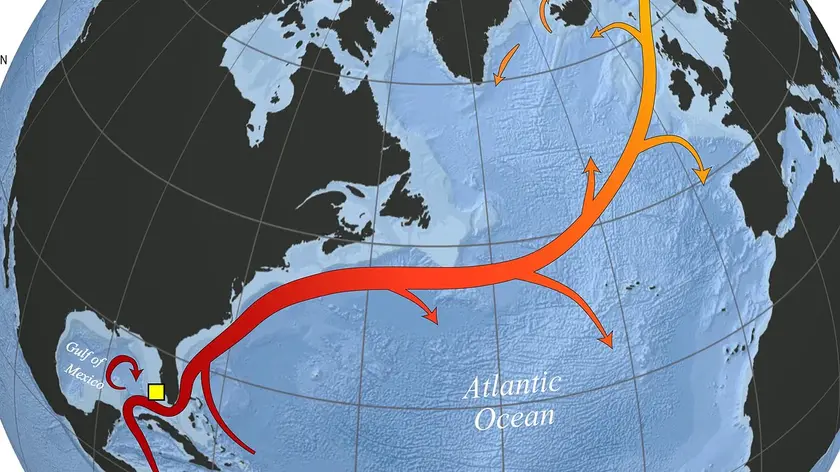T4K3.news
Gulf Stream Nears Tipping Point
New research links long term slowdown of AMOC to a northward Gulf Stream shift and a potential tipping point this century.

A long term slowdown of the Atlantic Meridional Overturning Circulation appears linked to the Gulf Stream moving northward, signaling a potential tipping point.
Gulf Stream Nears Tipping Point
A new study led by Edward Forman of the University of Southampton and James Baldini of Durham University argues the Gulf Stream, a key part of the Atlantic Meridional Overturning Circulation, has moved north since around 1720. The researchers used stalagmites from Leamington Cave in Bermuda to reconstruct past sea surface temperatures and found cooling in Bermuda and warming along the eastern coast of North America, consistent with a northward shift of the current.
Scientists describe the Gulf Stream as part of a larger conveyor belt that transports warm surface waters northward. They warn that a weakening of this system could cross a tipping point, creating a self perpetuating slowdown that may lead to large regional changes. If this occurs, Europe could see much colder winters and altered rainfall patterns, with potential impacts on wildlife and food security. The work is published in Communications Earth and Environment.
Key Takeaways
"If a tipping point is crossed, the weakening would become self-perpetuating and lead to a near-complete shutdown of these vital ocean currents."
The researchers warn of a self reinforcing shutdown mechanism.
"This could have serious implications for wildlife and food security."
Ecological and agricultural impacts are highlighted by the study.
"Even small changes in ocean circulation can have large regional consequences."
Conclusion of the study emphasizing regional impact.
"As global temperatures rise, many climate models predict further weakening of the AMOC and possibly a collapse this century."
Model projections cited by the researchers.
These findings put climate risk in a longer view. The study shows the Atlantic current may have been slowing for centuries, not just since fossil fuels rose. That matters for Europe, weather, and farming. Yet predicting the exact timing of a tipping point remains hard. The work uses cave minerals, which helps but has limits. More data and ongoing monitoring are essential. The science calls for careful policy discussion and steady investment in adaptation, even as researchers refine their methods and timelines.
Highlights
- Even small shifts in ocean currents can rewrite regional weather
- A tipping point could lock in a new climate pattern for generations
- The Gulf Stream drift north signals a slow turning of the climate engine
- Data from stalagmites offers a rare window into long term change
Climate policy and public reaction risk
The topic may prompt public debate and political sensitivity as governments weigh climate action, adaptation funding, and communication strategies.
The science invites careful policy debate and steady investment in adaptation.
Enjoyed this? Let your friends know!
Related News

Shark Week 2025 Starts Tonight

Perseid peak nears as moonlit skies challenge visibility

Tom Cruise Reflects on Mission: Impossible Legacy as Final Film Releases

Wrexham FC achieves historic promotion under celebrity owners

Military eating disorders risk to readiness

Meghan Markle's Netflix contract faces uncertain future

New Paramount merger finalized with numerous challenges ahead

Update from Montana authorities on the Anaconda shooting
